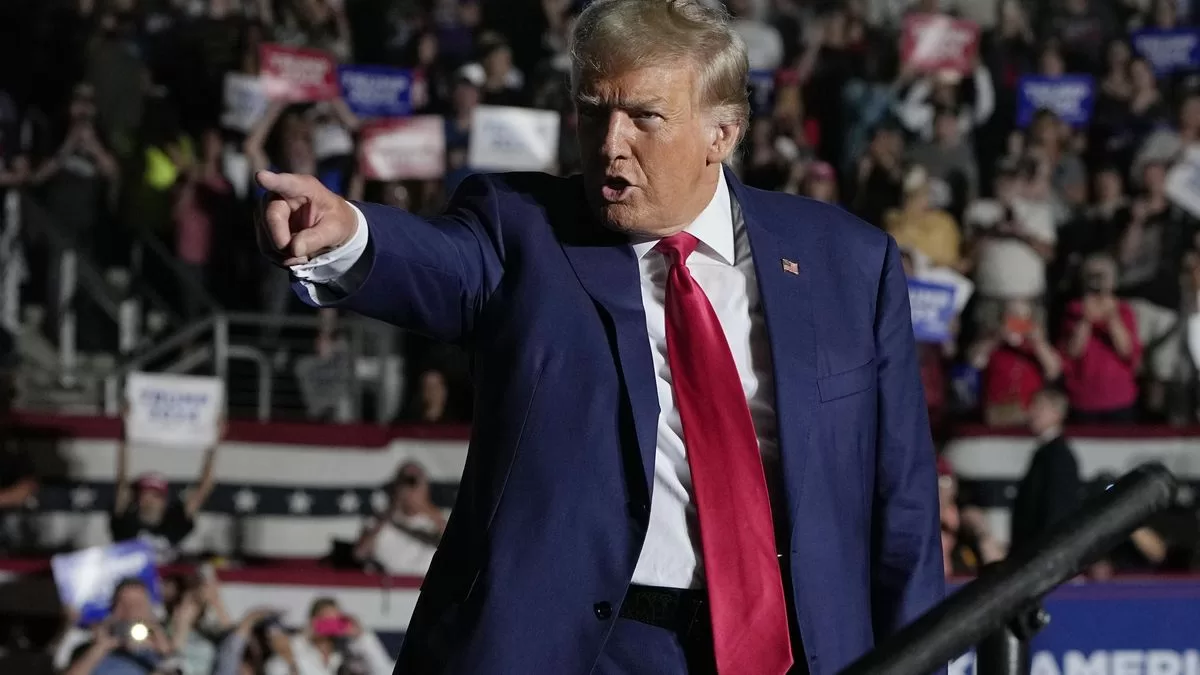The third criminal case against Trump details, among other charges, what prosecutors say was a massive, months-long attempt to “undermine, obstruct and derail” the federal process to certify the results of a presidential election, which culminated in the attack. to the Capitol on January 6, 2021.
The 45-page indictment alleges that when Trump failed to convince state officials to illegally tilt the election in his favor, he and his Republican allies began recruiting a list of phony delegates in seven hotly contested states — Arizona, Georgia, Michigan , New Mexico, Nevada, Pennsylvania and Wisconsin — to have them falsely sign certificates claiming that he, not Democrat Joe Biden, had won their states.
The scheme to use fake nominees began in Wisconsin, prosecutors allege, with a memo from Kenneth Chesebro, a lawyer who was advising the Trump campaign at the time to deal with legal challenges.
Cheseboro drafted the memo in mid-November 2020, calling on Trump supporters in Wisconsin to rally and vote for him, should the campaign’s litigation in the state be victorious.
But less than a month later, “in a sharp deviation,” a new memo was issued calling for extending the strategy to other key states, creating lists of “fraudulent collegiate voters” for Trump.
The ultimate goal, according to prosecutors, was “to prevent Biden from receiving the 270 Electoral College votes needed to secure the presidency on January 6.”
____
RECRUITING AND RETAINING FALSE COMMITERS
After the plan was expanded to include six states, Trump and attorney John Eastman asked Ronna McDaniel, chair of the Republican National Committee, to help the Trump campaign recruit collegiate voters in the chosen states.
The two men, according to prosecutors, “falsely explained” to McDaniel that the nominees would only be used if Trump’s lawsuits to contest the election were successful. McDaniel agreed to help.
As Trump’s collegiate voters prepared for a meeting on December 14, in which state delegates met in their respective capitols to certify the results of the election, some were concerned. Bogus collegiate voters told Rudy Giuliani and other Trump aides in a conference call that they had reservations about signing a certificate that would present them as legitimate voters for the state.
According to the indictment, Giuliani “falsely assured them” that their certificate would only be used if the Trump lawsuit was successful in court.
But winning in court was never in the plan, according to prosecutors.
Chesebro wrote in an email Dec. 13 that the strategy “was not to use fraudulent delegates just in case defendant’s litigation was successful in one of the target states.” Instead, he wrote, “the plan was to falsely present the fraudulent lists as an alternative to the legitimate lists in congressional certification processes.”
____
“WONDERFUL PLAY”
On the eve of the state certifications, people close to the Trump campaign, including a top adviser, raised their concerns in a group chat about the fake collegiate voter scheme, prosecutors say. Briefed on what was happening, Trump’s deputy campaign manager said the plan had “turned into a wild move.”
A senior adviser to the president, whose name is not provided, texted: “certifying illegal votes.” Campaign officials in the chat refused to sign off on a statement surrounding the plan, because none of them could “endorse” it, prosecutors allege.
____
LAST MINUTE ADDITION
New Mexico, which was not among the battleground states in the election, was nonetheless added to the mix the night before the Dec. 14 caucuses meeting. Cheseboro, at the request of a Trump campaign insider, wrote and sent bogus certificates to the state for Trump.
The decision was made despite the fact that there was no pending litigation on Trump’s behalf in New Mexico and the fact that he lost in the state by a difference of nearly 100,000 votes.
The following day, the Trump campaign filed an electoral challenge lawsuit in New Mexico, six minutes before the deadline for the submission of the voters’ votes, “as a pretext, so that there was a dispute pending to be resolved. there at the time when the fraudulent collegiate voters voted,” prosecutors allege.
____
“FALSE PROCEDURES”
On December 14, 2020, as pro-Biden Democratic caucuses in hotly contested battleground states gathered at their state government headquarters to cast their ballots, pro-Trump Republican collegiate voters also gathered. They signed and delivered fake Electoral College certificates declaring Trump the winner of presidential elections in Arizona, Georgia, Michigan, New Mexico, Nevada, Pennsylvania, and Wisconsin.
Those fraudulent certificates were mailed to Congress and the National Archives. In the end, only legitimate voter certificates were counted, despite Trump’s attempts to generate what prosecutors called a “false controversy.”
____
JANUARY 6TH
Trump allies in the days leading up to January 6 put intense pressure on Vice President Mike Pence, urging him to use the fake certificates to justify delaying the certification of the ballots during the joint session of Congress. One of Trump’s lawyers even hinted that Pence could simply throw out collegiate voters and declare Trump the winner.
Pence refused to do that over and over again, to which Trump complained that he was “too honest,” according to the indictment.
___
Associated Press writer Lisa Mascaro contributed to this report.
FOUNTAIN: Associated Press





